Flowers have always been considered a representation of grace and beauty. Their vivacious hues and alluring scents can brighten our day and bring back the simple pleasures of life.
The flowers beginning with the letter “A” are notably unique in the world of flowers. Each flower has its own distinct tale to tell and place in the natural world, from the seductive beauty of the Amaryllis to the graceful elegance of the Azalea.
In this thorough guide, we’ll delve into the intriguing world of “Flowers That Start With A” and learn everything about their unique blooms, including their secrets and fascinating anecdotes.
This voyage is sure to capture your imagination and give you a renewed appreciation for the wonder and beauty of the natural world, whether you are a lover of flowers, a curious soul, or just searching for some inspiration.
So let’s explore the meaning and relevance that these magnificent flowers beginning with A, hold for every one of us as we delve into their mystical realm.
Keep Reading:
- Flowers That Start With B
- Flowers That Start With C
- Flowers That Start With D
- Flowers That Start With E
- Flowers That Start With F
List Of Flowers That Start With A
1. Aubreita Deltoidea

Aubrieta Deltoidea, also known as Rock Cress or Aubretia, is a perennial groundcover beloved for its vibrant purple or pink flowers in spring.
These plants are perfect for rock gardens, walls, and borders due to their cascading growth habit. To achieve the best results, plant them in well-drained soil with partial to full sun.
Prune after flowering to encourage bushy growth and prevent legginess. Rock Cress is also drought-tolerant and deer-resistant, making it a low-maintenance option for various landscape designs.
2. Astrantia
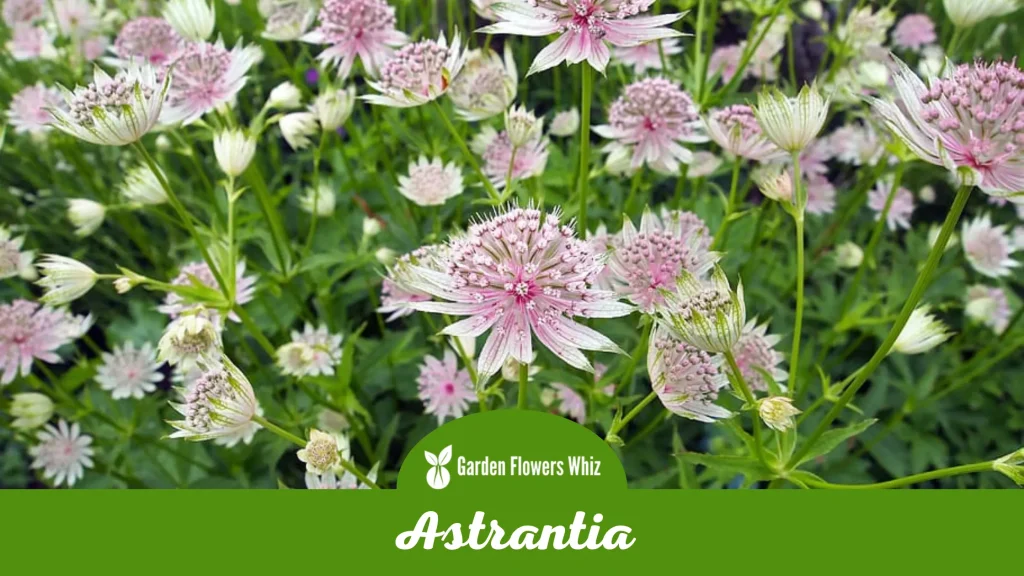
Astrantia, commonly called Masterwort, is a graceful perennial valued for its intricate, star-shaped flowers surrounded by colorful bracts.
The blooms, which come in shades of white, pink, and red, last from late spring through summer. Masterwort is ideal for woodland gardens or borders and thrives in moist, well-draining soil with partial shade.
To encourage prolonged blooming, deadhead spent flowers regularly. Divide mature plants every three to four years to maintain their vigor and prevent overcrowding.
3. Astilbe

Astilbe is a shade-loving perennial known for its feathery plumes of flowers in various colors, such as white, pink, and red.
The lush, fern-like foliage adds texture to any garden, making it an excellent choice for woodland settings or shaded borders. Astilbe prefers moist, humus-rich soil with good drainage.
To promote vigorous growth and prevent overcrowding, divide plants every few years, and incorporate organic matter into the soil.
Astilbe is also deer-resistant and makes a striking addition to cut flower arrangements.
4. Aster
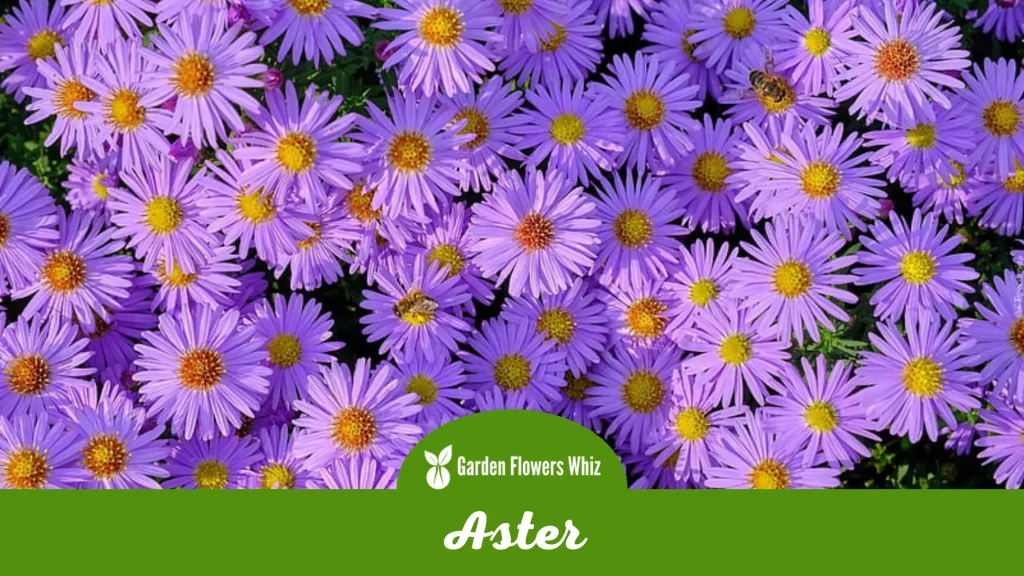
Asters are popular perennials celebrated for their daisy-like flowers in shades of purple, pink, white, and blue. These late-season bloomers attract pollinators and add much-needed color when other plants fade.
Asters thrive in well-drained soil with full to partial sun and require adequate air circulation to prevent powdery mildew. Deadhead spent blooms to prolong the flowering period and divide plants every few years to maintain healthy growth.
5. Asclepias Syriaca
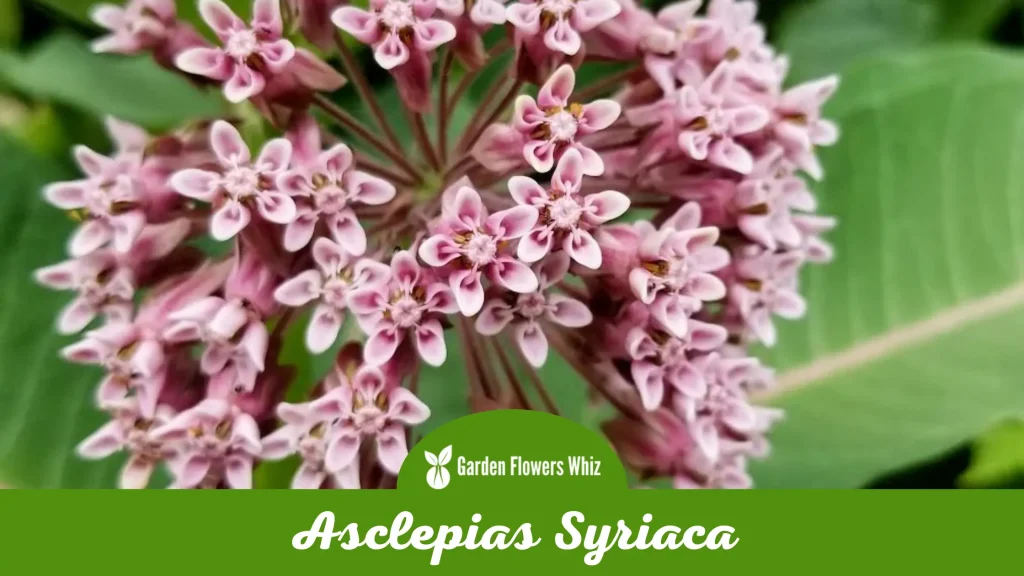
Asclepias Syriaca, commonly known as Common Milkweed, is a native wildflower crucial for supporting Monarch butterflies.
Its fragrant, pinkish-purple flowers attract a variety of pollinators, including bees and hummingbirds. Plant Common Milkweed in full sun with well-drained soil and provide ample space to accommodate its spreading nature.
Cut back in late fall or early spring to encourage fresh growth. As a native plant, Milkweed is drought-tolerant and deer-resistant, making it an eco-friendly option for various landscapes.
6. Aquilegia
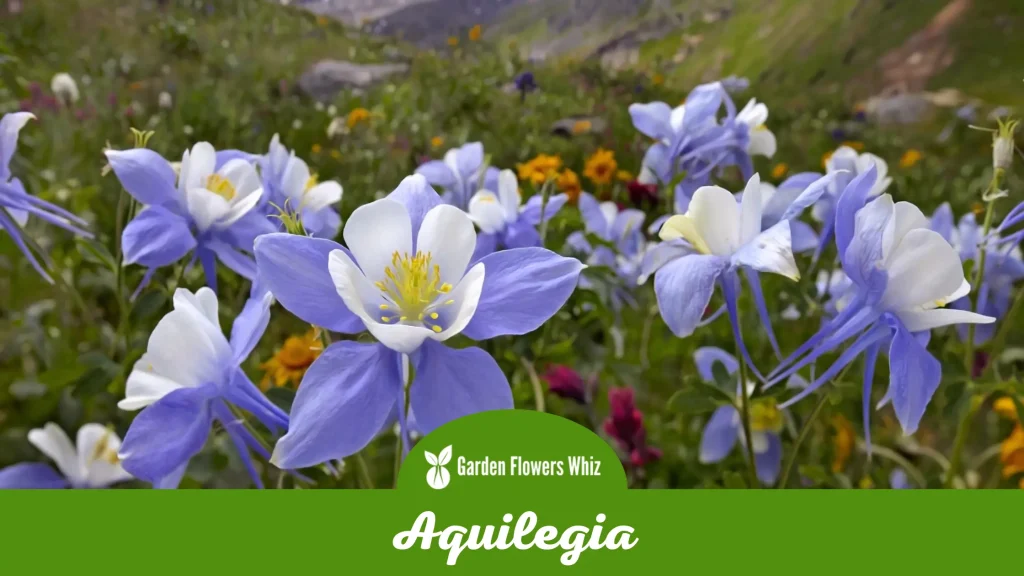
Aquilegia, or Columbine, is a charming perennial admired for its unique, spurred flowers that attract hummingbirds and butterflies.
The blooms come in various colors, such as blue, purple, red, and white, and can be single or double. Plant Aquilegia in partial shade with moist, well-drained soil.
Deadhead spent blooms to encourage reblooming and divide plants every three to four years to maintain vigor. Columbine is also deer-resistant and a popular choice for cut flower arrangements.
7. Antirrhinum Majus
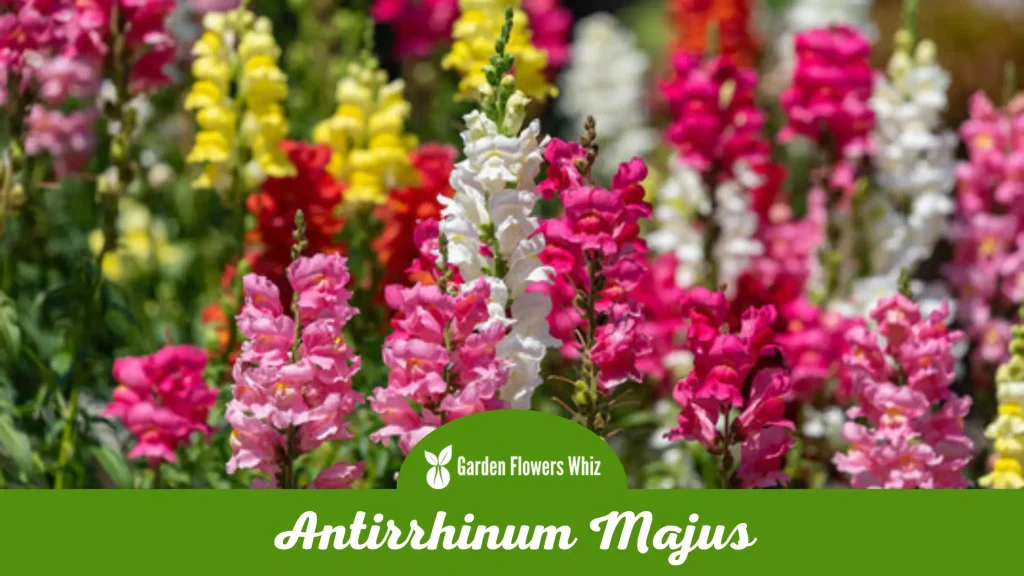
Antirrhinum Majus, or Snapdragon, is a versatile annual or tender perennial with tall spikes of tubular flowers in an array of colors.
Snapdragons are excellent for borders, containers, or cut flower arrangements. Plant them in well-drained soil with full sun to partial shade.
Deadhead spent blooms to prolong the flowering season and provide support for taller varieties. Snapdragons are available in various heights, making them suitable for different garden designs.
8. Anthurium

Anthurium, also known as Flamingo Flower, is a tropical plant cherished for its heart-shaped, glossy leaves and colorful spathes.
These exotic plants thrive in bright, indirect light and a well-draining, peat-based potting mix. Maintain consistent moisture and humidity to replicate their native environment.
Anthuriums are popular as houseplants or in greenhouse settings, and their long-lasting blooms make stunning cut flower arrangements.
9. Angelonia

Angelonia, commonly known as Summer Snapdragon, is a heat-tolerant annual boasting spiky flowers in shades of white, pink, purple, and blue.
These low-maintenance plants are ideal for borders, containers, or mass plantings. Plant Angelonia in full sun with well-drained soil and ensure adequate air circulation to prevent diseases.
Deadhead spent blooms to encourage continuous flowering throughout the summer.
10. Anemone
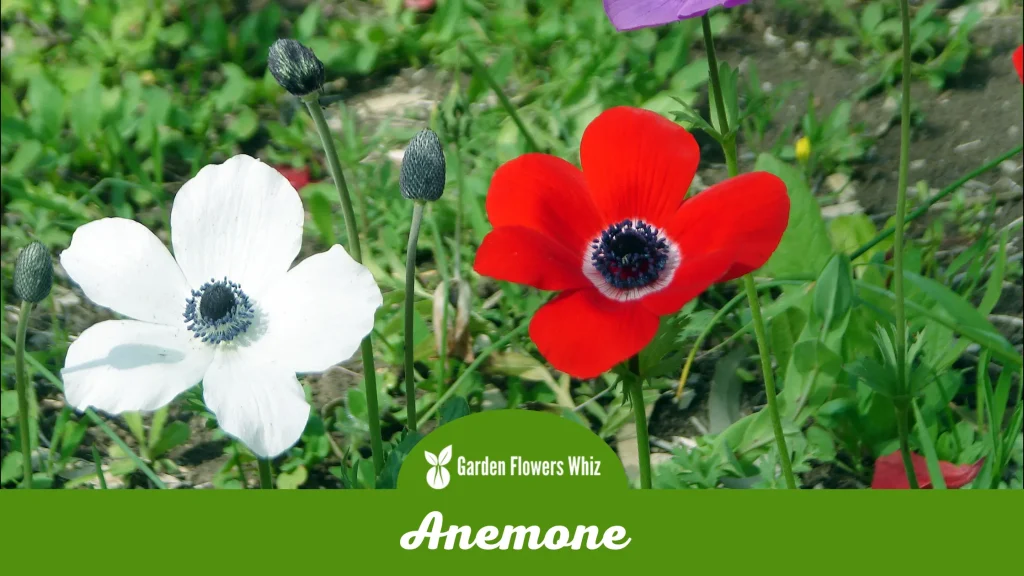
Anemone, or Windflower, includes various perennials with vibrant, poppy-like flowers that bloom in spring or fall, depending on the species.
Plant Anemones in well-drained soil with full sun to partial shade, and provide organic mulch to maintain moisture.
Regularly deadhead spent blooms to prolong flowering and divide plants every 2-3 years to prevent overcrowding.
11. Amaryllis
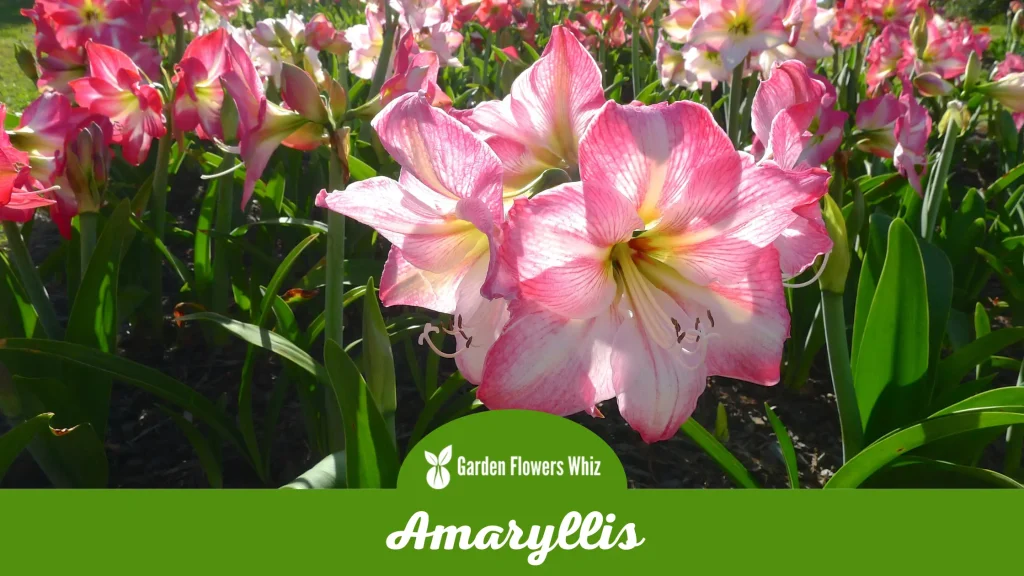
Amaryllis is a popular bulbous plant known for its large, trumpet-shaped flowers in red, pink, white, and orange shades. Plant bulbs in well-draining soil with bright, indirect light.
Water sparingly until growth appears, then increase watering to keep the soil consistently moist. After the plant blooms, allow the foliage to grow and mature to replenish the bulb for the following season.
12. Amaranthus
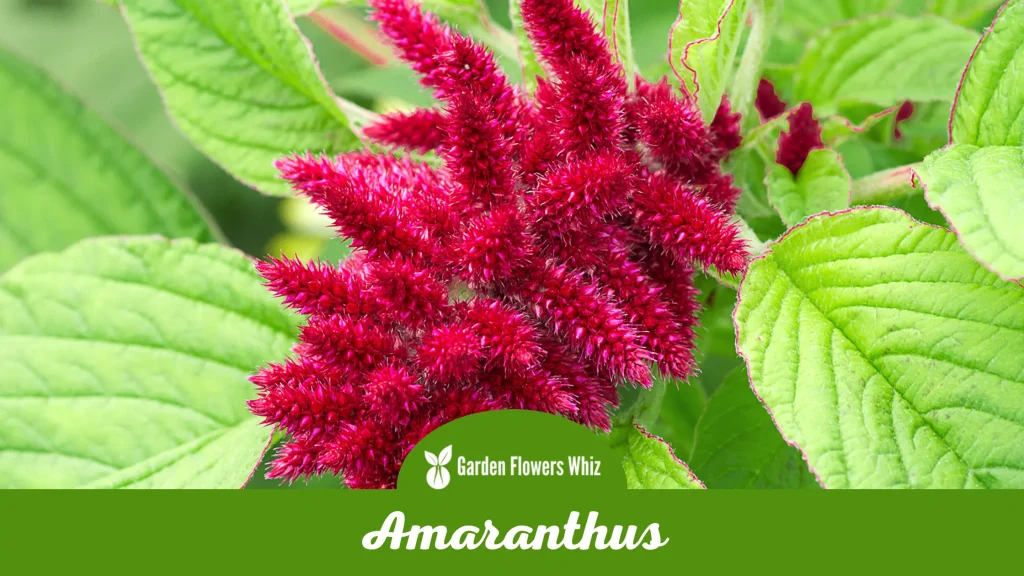
Amaranthus, or Amaranth, is an ancient grain valued for its striking, cascading flowers and nutritious seeds. Plant Amaranthus in full sun with well-drained soil and provide ample space for air circulation.
The dramatic blooms make a bold statement in borders, mass plantings, or as cut flowers. Harvest the seeds when the flowers begin to fade and dry.
13. Alyssum
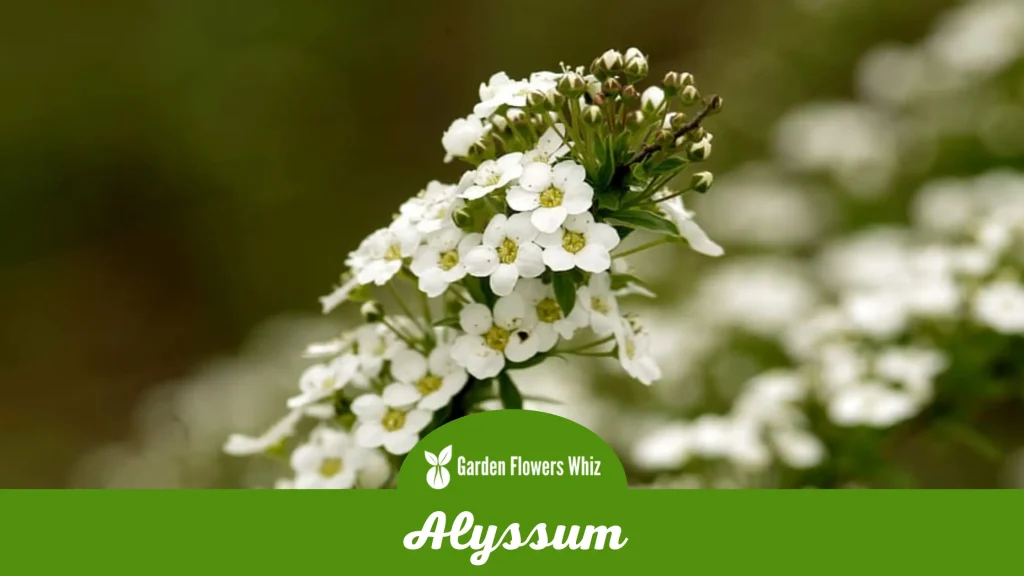
Alyssum, or Sweet Alyssum, is a fragrant, low-growing annual with clusters of tiny white, pink, or purple flowers. Plant Alyssum in full sun to partial shade with well-drained soil.
As a fast-growing ground cover, it’s ideal for borders, rock gardens, or containers. Regularly deadhead spent blooms to encourage continuous flowering.
14. Alstroemeria
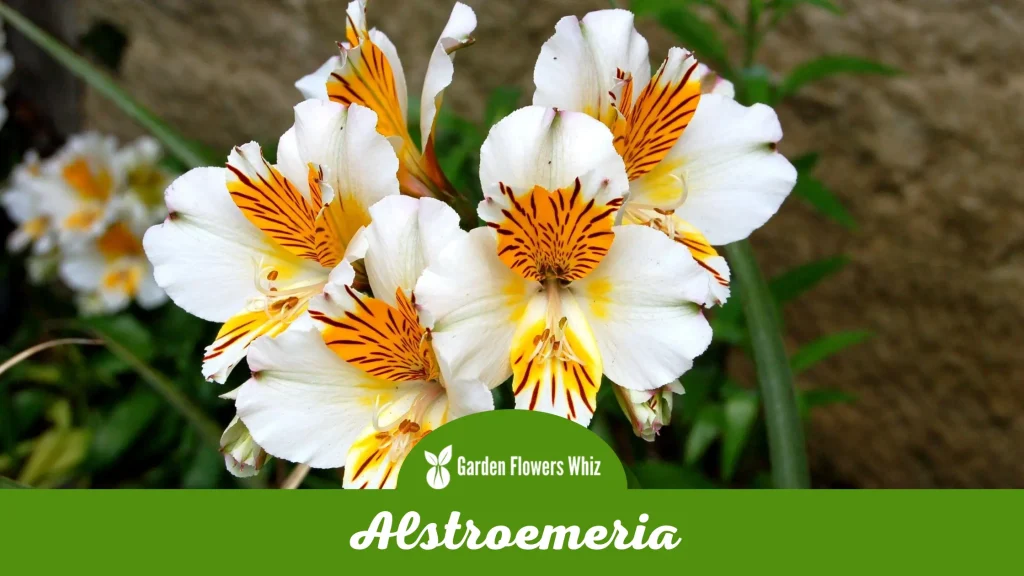
Alstroemeria, or Peruvian Lily, is a perennial prized for its striking, lily-like flowers in various colors. Plant Alstroemeria in well-draining soil with full sun to partial shade.
Provide support for taller varieties and maintain consistent moisture. Alstroemeria is popular for cut flower arrangements due to its long vase life.
15. Allium Roseum
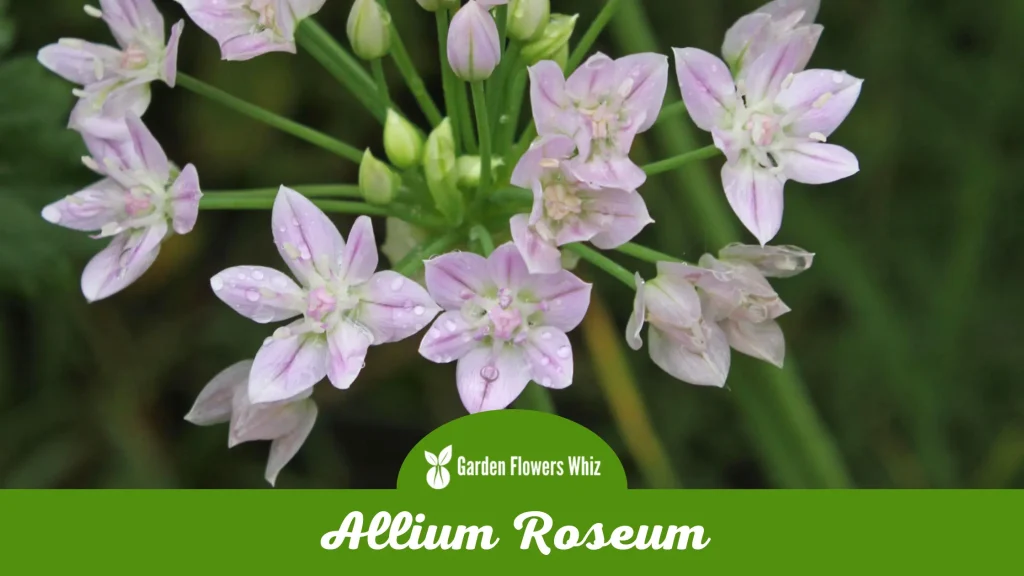
Allium Roseum, or Rosy Garlic, is a bulbous perennial with umbels of pink, star-shaped flowers. Plant bulbs in well-drained soil with full sun in the fall for late spring to early summer bloom.
Allium Roseum is ideal for naturalizing in meadows or borders, and its flowers attract pollinators.
16. Alchemilla
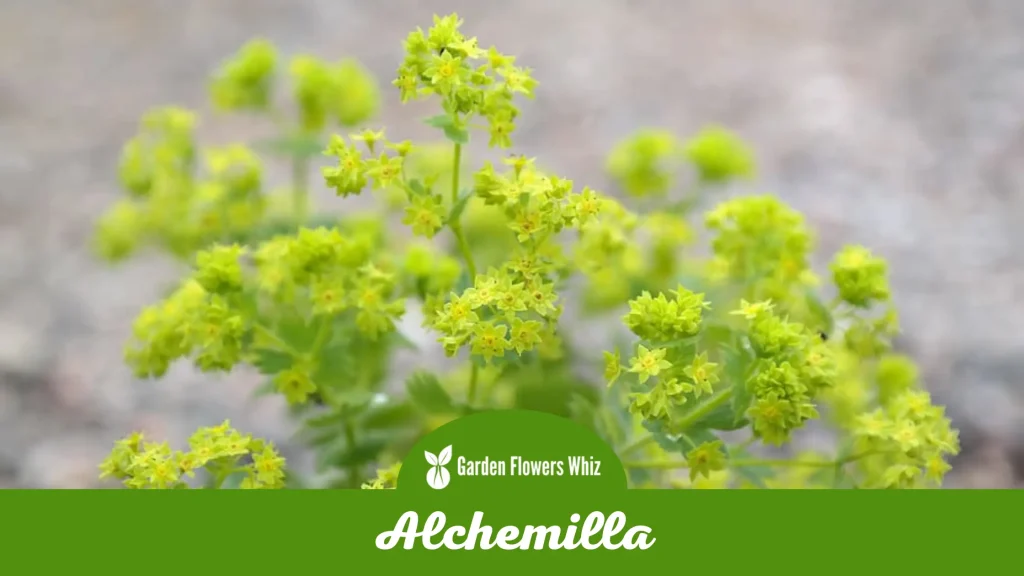
Alchemilla, or Lady’s Mantle, is a perennial known for its scalloped, water-repellent leaves and frothy clusters of yellow-green flowers.
Plant Alchemilla in moist, well-draining soil with full sun to partial shade. It’s ideal for borders, woodland gardens, or ground cover.
Regularly deadhead spent blooms to prolong flowering and divide plants every few years to maintain vigor.
17. Ageratum Houstonianum
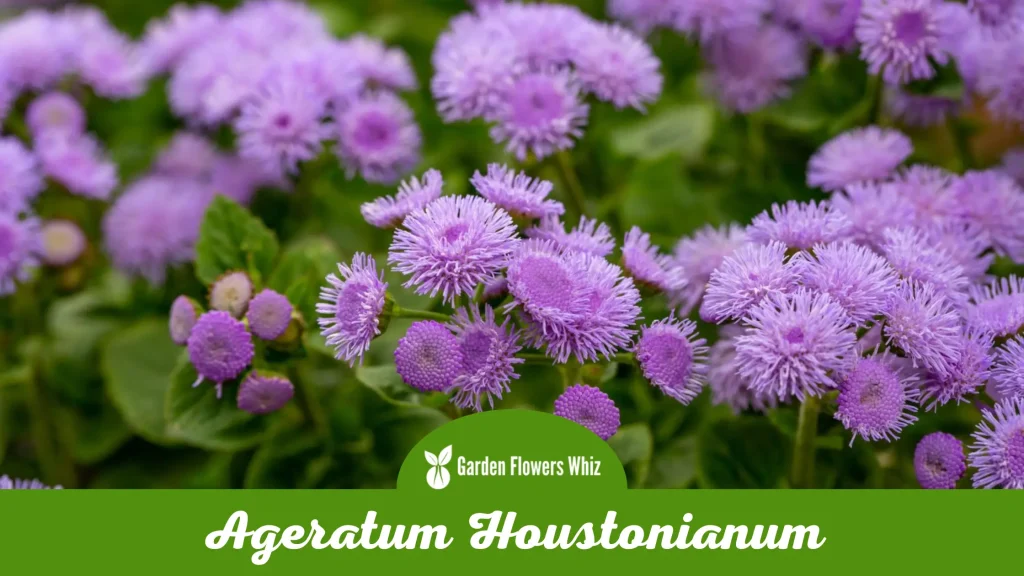
Ageratum Houstonianum, or Floss Flower, is an annual boasting fuzzy, button-like flowers in shades of blue, pink, or white. Plant Ageratum in well-drained soil with full sun to partial shade.
This low-maintenance plant is ideal for borders, containers, or mass plantings. Deadhead spent blooms regularly to encourage continuous flowering throughout the season.
Ageratum also attracts pollinators, making it a valuable addition to any garden.
18. Agapanthus
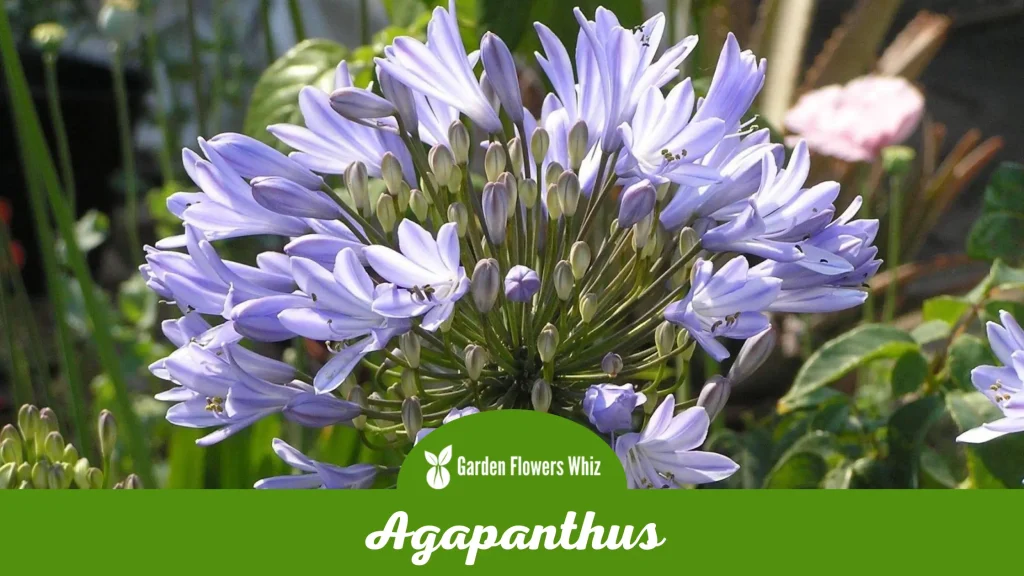
Agapanthus, commonly known as Lily of the Nile, is a perennial celebrated for its striking, globe-shaped clusters of trumpet-like flowers in shades of blue or white.
Plant Agapanthus in well-draining soil with full sun to light shade. Water consistently during the growing season and provide a balanced fertilizer to promote healthy growth.
Agapanthus is perfect for borders, containers, or as a focal point in the garden, and its flowers are excellent for cut arrangements.
19. African Daisy
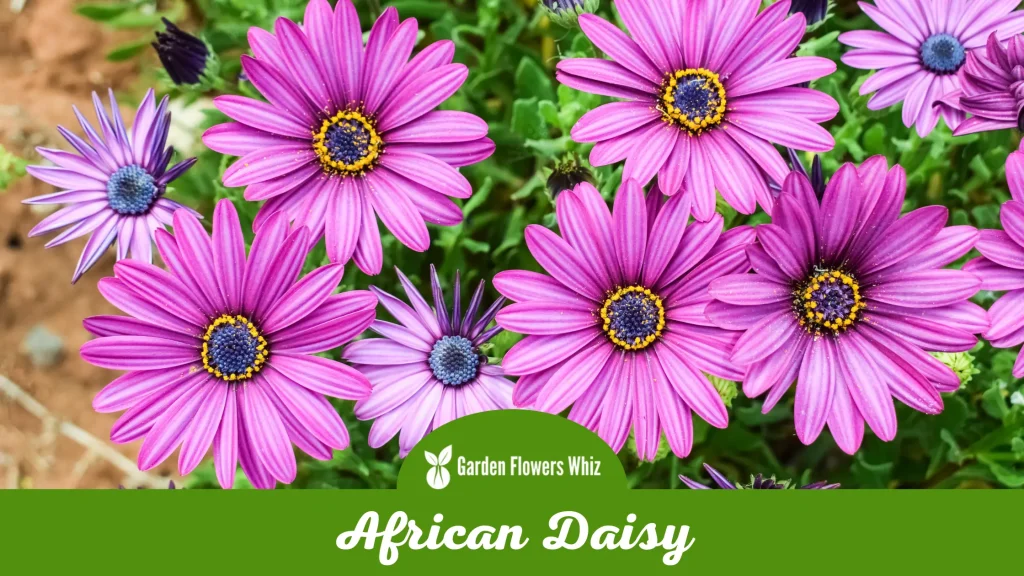
African Daisy, or Osteospermum, is a sun-loving, drought-tolerant perennial known for its daisy-like flowers in a variety of colors, including white, yellow, pink, and purple.
Plant African Daisies in well-drained soil with full sun and provide moderate water. Regularly deadhead spent blooms to encourage continuous flowering throughout the season.
African Daisies are perfect for borders, containers, or mass plantings, and they attract pollinators like bees and butterflies.
20. Aconitum
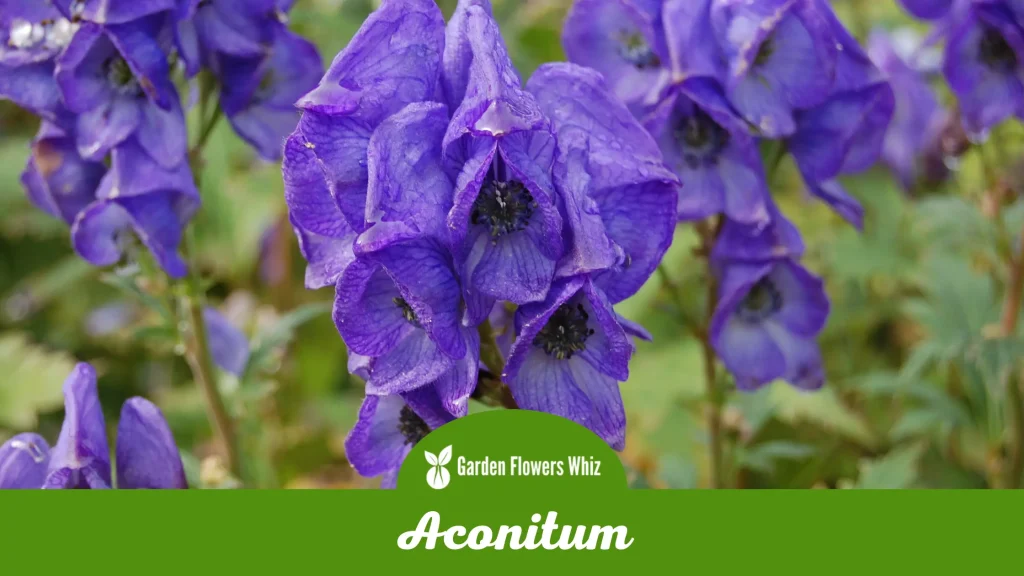
Aconitum, or Monkshood, is a tall, stately perennial valued for its hooded, deep blue or purple flowers that bloom in late summer to early fall.
Plant Aconitum in moist, well-draining soil with partial shade. Provide support for taller varieties and protect from strong winds.
Aconitum is ideal for woodland gardens or shaded borders, and its flowers are suitable for cut arrangements. Note that all parts of the plant are toxic, so exercise caution when handling it, especially around children and pets.
In Summary
We have unearthed a treasure mine of beauty, significance, and meaning as we near the conclusion of our adventure through the world of flowers that begin with the letter A.
We learned more about the natural world and its many beauties as we examined the various traits and symbolism that each bloom possesses.
Notwithstanding their unique characteristics, these flowers share the capacity to serve as a constant reminder of the strength and ability of nature to inspire and uplift us.

Stacey Hernandez is a seasoned botanist with over 16 years of experience in the field. Her passion for plants and their intricate workings began at a young age, and she has since devoted her life to studying and understanding them.
Stacey’s expertise extends to a wide range of plant species, from delicate flowers to towering trees. As the founder of Garden Flowers Whiz, Stacey has created a platform for plant enthusiasts to seek guidance and advice.
Her website is a go-to resource for those seeking answers to their gardening dilemmas, whether it’s how to care for a particular plant or which species to choose for a specific climate.
